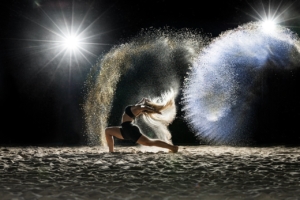👻 As the spooky season rolls in, let’s talk about more than just skeleton costumes.
—let’s talk about your real skeleton and how to keep those bones strong and healthy for dance! 💀
Why Bone Health is Critical for Dancers
Dancers, especially competitive and adolescent dancers, put a lot of stress on their bodies. From big jumps to long rehearsals, every move you make impacts your bones. But don’t worry—our skeletons are built to adapt! Without proper care, bones can be at risk for injuries, particularly during growth spurts. October is the perfect time to focus on bone health, just in time for those spooky skeleton vibes and intense rehearsals leading into winter shows and competition season.
Bone Health: The Basics
Your bones are constantly regenerating. This process requires key nutrients like calcium and vitamin D, combined with weight-bearing activities (like dance!) to strengthen them. Dancers face unique challenges due to their high physical demands. That means it’s important to pay extra attention to bone health. Here’s how you can keep your bones strong, preventing injuries and staying in peak performance condition.
🎃 Bone-Boosting Tips for Dancers: Trick or Treat Yourself to Stronger Bones 🎃
-
Calcium & Vitamin D are Critical
- Your body needs calcium to build strong bones. Good sources include dairy products like milk, yogurt, and cheese, or plant-based options. These could include fortified almond milk, tofu, and leafy greens like kale and spinach.
- Vitamin D is crucial for calcium absorption, and it comes from two main sources: sunlight and certain foods. Dancers don’t spend a lot of time outdoors, so it’s essential to get enough from food or supplements. Eggs, fortified milk, and fish are excellent sources.
- Bonus Tip: Need help figuring out your individual needs? Talk with a dietitian!
-
Cross-Training for Stronger Bones
- Dance is a weight-bearing activity, which is fantastic for bone strength. But adding other forms of exercise like running or strength training can target different muscles and bones, giving your body a well-rounded workout.
-
Body-Weight Exercises
- Incorporate body-weight exercises such as lunges, squats, and planks to build strength and promote bone density. These exercises work multiple muscle groups, which helps to support your bones and joints. This also means you’re reducing the risk of injury.
-
Lifting Weights
- Don’t shy away from picking up actual weights! Studies show that resistance training with weights not only strengthens muscles but also enhances bone density by stimulating the growth of new bone tissue. Try working with light to moderate weights for exercises like squats, deadlifts, or even simple dumbbell presses. Not only will this help support your joints and bones, but it will also enhance your power and control in dance movements.
-
Stay Hydrated to Keep Bones Happy
- Dehydration can weaken bone structure over time. Make sure you’re drinking enough water before, during, and after rehearsals. Dance teachers, make sure your students get regular water breaks!
-
Maintain a Balanced Diet
- A diet lacking in nutrients can cause your body to take calcium from your bones, weakening them over time. Encourage meals that include lean proteins, whole grains, fruits, and vegetables to keep everything balanced.
-
Rest and Recovery
- It’s no trick—taking time to rest is critical for bone health! Overworking your body without adequate rest can increase the risk of stress fractures. Make sure to prioritize sleep and take breaks between intense rehearsals.
🎃 Spooky Signs to Watch Out For: Could Your Bones Be at Risk? 👻
With the increase in rehearsals as dancers prepare for winter shows and competition season, the risk of bone stress injuries—including stress fractures—also rises. These injuries occur when bones are overworked without enough time to rest and recover, leading to tiny cracks, most commonly in the shins, feet, or hips.
Unlike acute fractures that happen suddenly, stress fractures develop gradually due to repetitive force on the bones, a common occurrence for dancers who spend hours jumping, turning, and landing. Signs of a stress fracture include localized pain, swelling, or tenderness that worsens with activity but might subside with rest.
With the ramp-up in rehearsals for the winter show and competition season, it’s important to know the signs that your bones might need extra care. Look out for:
- Persistent pain: If you’re feeling pain in your shins, feet, or other bones that doesn’t go away, it could be a stress reaction or fracture.
- Fatigue: If you’re constantly tired, it may indicate that your body isn’t getting the nutrients it needs to repair itself properly.
- Injury history: If you’ve had stress fractures or other bone injuries before, make sure to be extra cautious and follow the bone-boosting tips mentioned above!
💀 Bone Health Beyond Halloween: Setting Yourself Up for a Strong Future
Bone health is a long-term commitment, and what you do now will impact your dancing future. By staying on top of your nutrition, training, and recovery, you’ll build a solid foundation that will serve you well into competition season and beyond.
Teachers and parents, take an active role in promoting good bone health by providing balanced meals and encouraging cross-training and rest. Dancers, remember that being mindful of your bones today will help you dance stronger tomorrow—and for many years to come.
The Bottom Line: Don’t Let Your Skeleton Scare You!
Taking care of your bones ensures you’ll have the strength, stability, and resilience to dance at your best, whether you’re prepping for the winter show or heading into competition season.
If you suspect a stress fracture, seek medical attention immediately, as continuing to dance on an injured bone can lead to more serious issues that may take months to heal. Remember, prevention is key to keeping your bones strong and healthy throughout the dance season!
Happy (and healthy) dancing this October! 🎃👻



